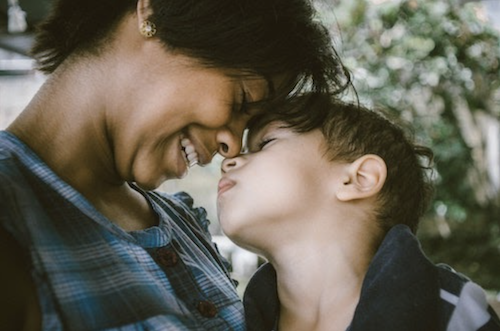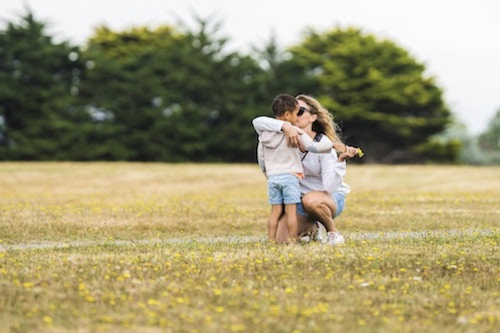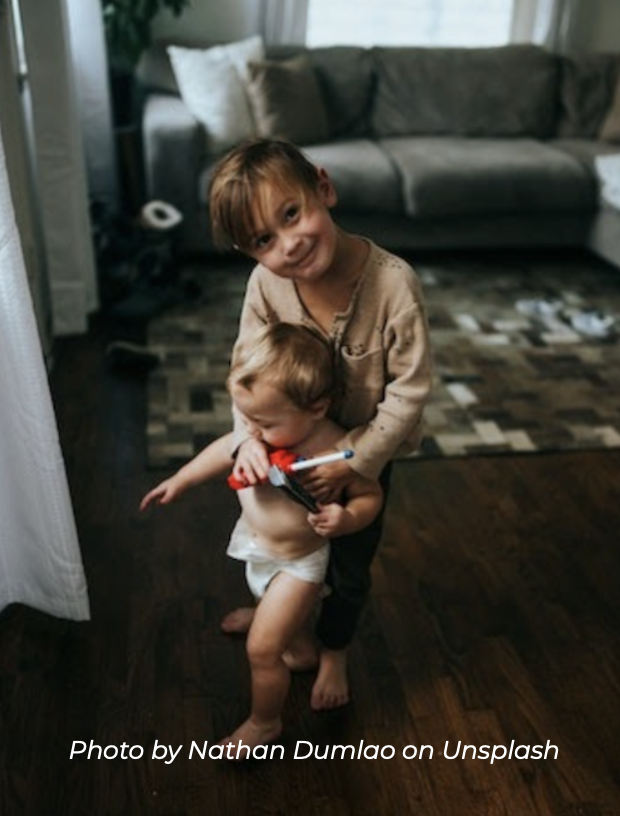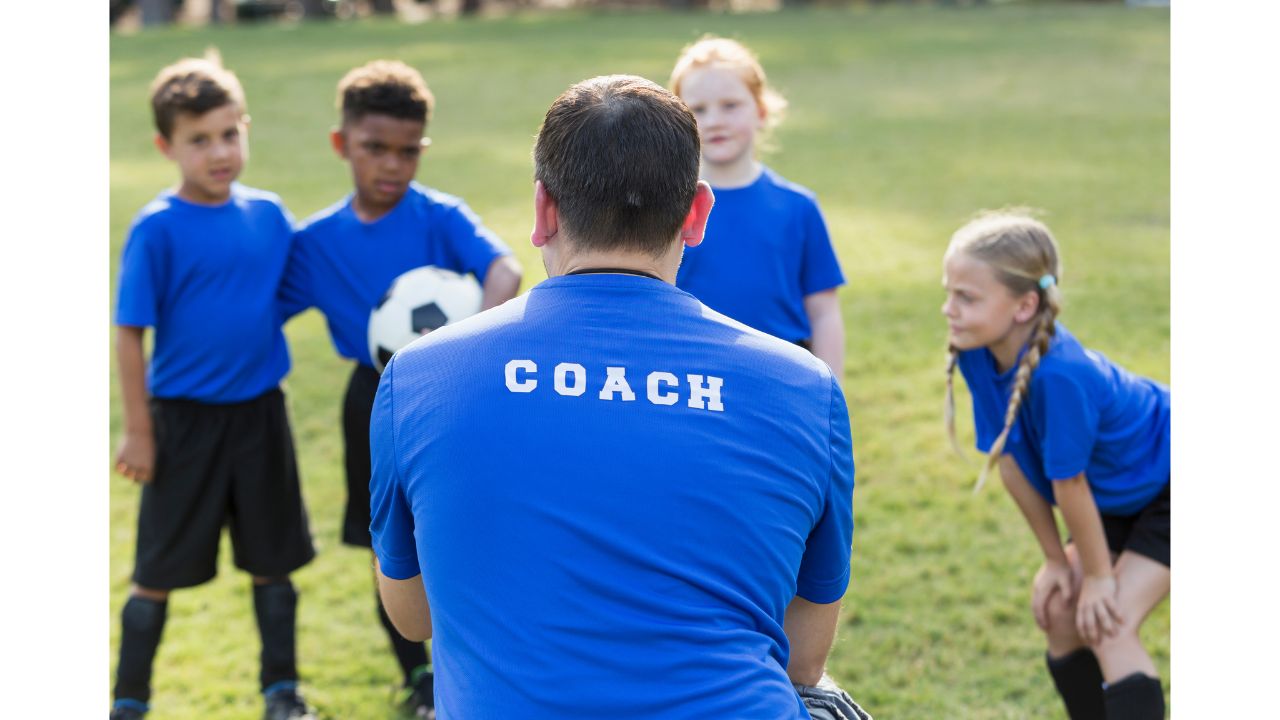One of the most common requests I receive from my parent coaching clients is, “How do I remember what to do in the heat of the moment?” When we are stressed out and frustrated by an intense parent-child moment, it is helpful to have a mantra or symbol to hold in mind to guide us on both a conscious and subconscious level. For me, the 4 C’s of “Calm, Clear, Connect, Collaborate” work to set me on a conscious path to peace with my children.
It’s so easy to slip back into our default settings when we are reacting instead of responding.
I, myself, slip into default mode with my own children sometimes, so I’ve come up with the 4 C’s to guide myself and the parents I coach. When we need to consciously de-escalate situations to restore harmony with our children and other family members, these four words can help us get centered and be more effective. Try these steps and see if they help you, too.
The 4 C’s of Conscious Parenting: Calm, Clear, Connect and Collaborate
CALM yourself
CLEAR up what is most important
CONNECT with your child by understanding each other’s feelings and needs
COLLABORATE to find solutions
Let’s look at each of these actions more closely to help you see how to apply them in day to day life.

Photo by Jeremy Bishop on Unsplash
Calm Yourself
We have to start with ourselves.
The only person we truly control is ourselves, and learning how to manage ourselves is an essential skill. Our ability to self-regulate is key to teaching our children how to self-regulate. Like any strengthening exercise, it takes focus and practice. When a situation is becoming tense and potentially unpleasant (often due to saying “No” or “Stop” to our child or teen about something), it’s important to STOP, DROP (our agenda for the moment), and BREATHE to become CALM.
Unless something is imminently dangerous, a few seconds of pausing to breathe and connect with ourselves so that we can shift into a calmer, slower state of being is well worth the effort. Our energy and behavior have a direct effect on our child through co-regulation and mirror neurons (topics I’ll explore in a future blog). Our children are literally wired to respond to the mannerisms and energy of the people around them, especially people they love.
Be the change you want to see in your child.
One of my clients told me last week that shifting her own behavior was like “casting a spell” upon her son and that his aggressive behaviors melted away when she calmed herself and spoke in a warm, soothing voice instead of a loud, controlling command. Not every child will respond instantly, but you will definitely lower the temperature of hot interactions by calming yourself first.
If you have a child who needs to blow off steam when angry, this is especially important. I have found that when I respond calmly to an angry torrent (no matter whether it’s directed at me or about something else), I feel more in control and better able to be a “harbor for her ship” after it tosses in the storm. Otherwise, we are both causing more waves, which doesn’t help anyone.

Photo by Bruno Nascimento on Unsplash
Calming ourselves first is key to success.
Learn to pay attention to your body and your thoughts as you start getting upset. Know that you have the power to calm yourself. You can breathe, count, press on something, or briefly step away from the situation.
Favorite self-calming tricks of parents I’ve worked with over the years include:
- washing one’s face or hands
- stepping outside
- going in a different room
- doing a plank
- pressing your fingers from each hand together in front of your heart
- closing your eyes while breathing
Try something and see what works best for you. Whatever you do, close your mouth and turn within for a few seconds. I’ve even imagined my mouth duct taped shut before to calm and quiet myself for a minute (inspired by Vicki Hoefle’s book Duct Tape Parenting).
 Take 90 Seconds to Let an Emotion Pass
Take 90 Seconds to Let an Emotion Pass
According to Harvard brain scientist Dr. Jill Bolte Taylor, it only takes ninety seconds to identify an emotion and allow it to dissipate while you simply notice it. She says, “When a person has a reaction to something in their environment, there’s a 90-second chemical process that happens in the body; after that, any remaining emotional response is just the person choosing to stay in that emotional loop.” So, if you can allow yourself to just simply notice your emotions and feel your feelings for 90 seconds, you will notice that they lift away unless you choose to keep spinning in that loop. I have found this practice to be amazingly effective, both in my own life and for my clients.
CLEAR up what is most important
Clarity opens up new steps and stirs creativity. We know what our goal is and we can be more playful and gentle about the pathway to get there.
So, once you are feeling more calm (doable in a matter of seconds as described above), get clear. Ask yourself, “What is most important right now?” Think practically and relationally in the big picture of life.
Allow your swirling thoughts to settle as you breathe and focus on what matters most.
With younger children, maybe the answer is “getting my child out of the bath” or “having a happy end of the day.” With older children, it might be “keeping my child talking about what’s going on” or “keeping my child safe.” Once we step back from a potential power struggle, we can better identify the next steps that need to happen or come up with a creative solution.
What does clarity in practice look like?
For example, if what’s most important is having a happy end of the day, you might choose to be silly. You can guide your rambunctious children into their pajamas acting like a kangaroo instead of yelling and roughly pulling a pajama top over someone’s angry little head. You will accomplish what needs to happen with greater peace and equanimity, which means your child will be more cooperative and probably sleep better, too.
With an older child, you might keep our judgmental or nervous feelings to yourself as you listen to a story so that your child feels listened to instead of being judged and shut down. This can be difficult, but if you just observe your feelings as they come up, you can stay quiet and focus on listening to your child. Oftentimes kids will find a solution of their own just through talking out their feelings and thoughts. Walking together or letting your child walk in a circle around you or a piece of furniture can be helpful, too, as they unpack their thoughts.
If you have a child who doesn’t want to talk, you can keep your conversations brief and direct or send written notes. This has been very effective for some of my clients, and I’ve used it with my teens as well, especially when emotions are running high. Written apologies, invitations and questions can inspire honest and creative responses.
CONNECT with your child by understanding each other’s feelings and needs

Photo by Guillaume de Germanine on Unsplash
Connection means looking from your child’s point of view at a situation.
This is one of the most profoundly helpful things I help parents do in our parent coaching sessions. When we imagine what our child is thinking and experiencing, we can get in touch with our child’s deeper needs. And once we meet those needs, most negative behaviors will melt away. Our child also feels seen, heard and understood, which brings out feelings and expression of love and affection.
Verbal connection:
Because you don’t want to make assumptions about what another person is feeling and thinking, it’s best to say something like, “You sound angry. Is that how you are feeling?” or “Wow, are you really upset because we have to…?” or “That must have made you feel sad/lonely/hurt. Is that what you felt?” Then you need to listen to the child’s response. They are likely to give more information about those feelings or correct you with what they were actually feeling.
Once you understand the feelings, you can gently ask, “What do you need right now? Is there anything I can do to help?” Even if your child can’t yet tell you, just asking that question will get them thinking about what they need. And, you are letting them know you are there when they are ready.

Non-verbal connection:
Eye-contact, physical proximity, hugs, comforting touch, and stopping what you are doing are all ways of connecting with another person in a non-verbal way. Not everyone likes all of these ways of communicating, so you have to know your child, partner or friend well enough to read what they need. My children often respond well to hugs, but sometimes they want space. In those moments, I need to be present, but not too close. Learn to read your child’s signs and respect their needs. You can say, “I’m right here to give you a hug or hold you when you are ready.”
Use your presence.
As a parent, you are often busy, and it’s tempting to keep doing what you are doing, whether it be checking an email or cooking dinner. But if you can stop and give a child or teen your full attention for a few minutes, that presence can create a strong feeling of connection. If you can’t put the baby down, stop talking on the phone, or doing something, you can say something like, “I want to give you my full attention, so can you please wait until I have …, and then I can listen/help you/do…” And then you need to follow through, and do what you said you would do.
Connection leads to cooperation.
When our children feel connected to us, they are much more willing to cooperate, be pleasant, empathize and be helpful. So if you are seeing unpleasant behavior, make sure you look for ways to connect with your child, even if you are not feeling attracted to their behavior. You can name what is hard and let your child know you are right there, ready to connect with them then they are ready.
For example,”When you are spitting/hitting/kicking, I don’t want to get close to you. If you can stop doing that, I am right here ready to help you when you are ready.” OR, “When you use that tone of voice, I don’t feel like listening to you. However, I want to hear what you have to say, and I’m right here when you are ready to speak to me with a kinder tone.” Try it and see what happens.
COLLABORATE to find solutions

Once you have connected with your child by naming what is going on (“Name it to tame it” – a practice I have been alluding to above), acknowledging feelings and needs, and/or being physically present, you can collaborate with your child. The clarity you sought earlier will help you know what is non-negotiable and what is open for discussion. You can state the problem and ask your child what he/she/they think might be a solution if they are resisting your efforts.
Here are some examples by age group of what collaboration might look like:
Young children:
“Dinner is on the table (State the facts non-judgmentally). I’m worried it’s going to get cold and that you might forget to eat (your feelings). I know it’s hard to stop watching a show and to get up when you’re all cozy (acknowledge their feelings), so I’m going to be the tickle monster/mama bear/ lion to get you all up and over to the table! If they groan and resist, try collaborating: “Does anyone have a good idea about how to get three hungry people off the couch and over to the dinner table? I need some creative ideas!”
Older children:
“I noticed that your clothes are on your floor instead of in your hamper after you wear them. (Observation) I feel happier about doing your laundry when I just have to take your hamper. That way I know what is clean and what is dirty. (Feelings) Do you have a good idea about what you can do to help out with the laundry? (Collaboration – Be open to trying what your child suggests.)
Teens:
“It seems like your homework takes longer when you have your phone with you. What do you notice? (Observations) I’m worried you won’t finish that assignment before dinner. (Feelings) What do you want to try so that you don’t get as many interruptions? Is there anything I can do to help?” (Collaboration)
Putting Your Four C’s into Action
If these ideas sound good to you, but you need some support on how to make them work for your family, schedule a Clarity Call with me. Start with one C and work on that first. As you make progress on that one step, you will also be setting yourself up for success with the other C’s, too.
CALM yourself
CLEAR up what is most important
CONNECT with your child by understanding each other’s feelings and needs
COLLABORATE to find solutions
As you practice the four C’s you will gain a 5th – CONFIDENCE! Use your mistakes as insightful fuel to keep yourself growing and practicing. Like any skill, you need to keep practicing to see change. Experiment and see what works with your children. Set up a call with me if you need help.
Write to me at amy@amybehrens.com with your questions and share your stories of trying out these ideas! I’d love to hear what you notice and cheer you on. You can do this!
Who I serve: I coach parents from coast to coast in the US and internationally. Thanks to Zoom, I am currently coaching parents from Boston to Seattle, Connecticut to California, as well as New York, Ohio, and Colorado. I’ve worked with parents in Bermuda, Japan, Portugal, and Canada as well. I’m grateful for these global and domestic connections!






Leave A Comment